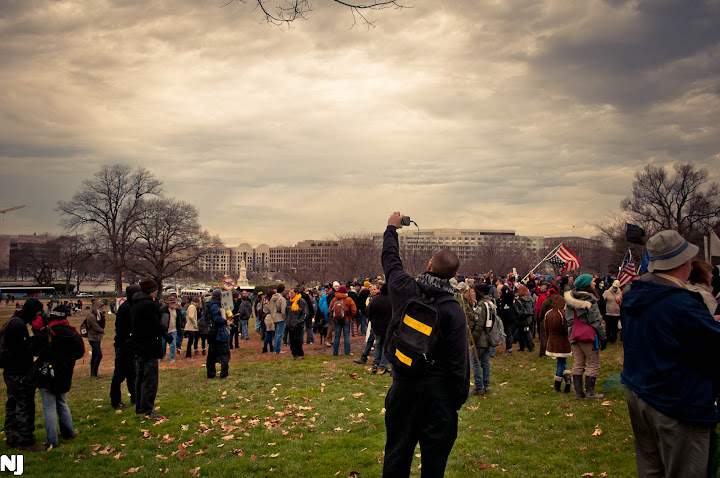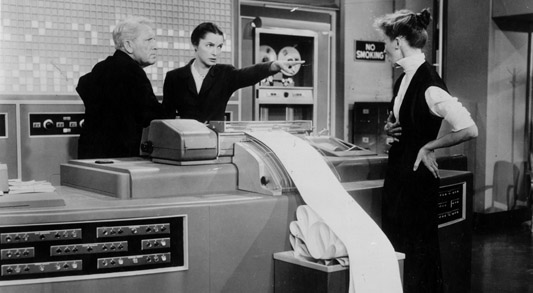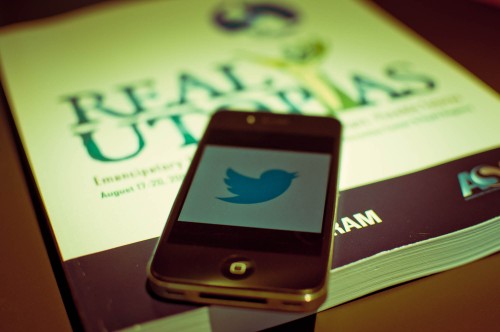Photos by Nathan Jurgenson, taken in Washington, D.C., 17, January 2012.
 Malcolm Harris has posted one of the most provocative things I’ve ever read about social media, “Twitterland.” I’d like to point you the story and go through some of the many issues he brings to light. Harris’ story is one of theorizing Twitter and power; it can reinforce existing power imbalances, but, as is the focus here, how it can also be used to upset them.
Malcolm Harris has posted one of the most provocative things I’ve ever read about social media, “Twitterland.” I’d like to point you the story and go through some of the many issues he brings to light. Harris’ story is one of theorizing Twitter and power; it can reinforce existing power imbalances, but, as is the focus here, how it can also be used to upset them.
Digital Dualism
Harris begins by taking on the idea that Twitter is a “tool” or an “instrument”, arguing that, no, Twitter is not a map, but the territory; not the flier but the city itself; hence the title “Twitterland.” However, in nearly the same breath, Harris states he wants to “buck that trend” of “the faulty digital-dualist frame the separates ‘real’ and online life.” As most readers here know, I coined the term digital dualism and provided the definition on this blog and thus have some vested interest in how it is deployed. And Harris’ analysis that follows indeed bucks the dualist trend, even though I would ask for some restating of the more theoretical parts of his argument. I’d like to urge Harris not to claim that Twitter is a new city, but instead focus on how Twitter has become part of the city-fabric of reality itself.
Much of what Harris goes onto describe is not some separate Twitterland City “made of text” but instead a city made of physical space, bodies, as well as information, be it textual, oral, visual, etc. At no point does Harris ever articulate any new strategies existing fully in the text-space of a new Twitterland, but are instead always examples of just how deeply text is embedded within physical space, just as physical space is also increasingly co-dependent on new flavors of information. Bracketing Harris’ unintentional dualist language, let’s look at his four stories of walking and talking in the augmented city.
OK Computer
The first story involves Harris and others starting a rumor that the band Radiohead would be playing Zuccotti Park in support of the Occupy Wall Street movement. What follows is illustrative of journalism and information dissemination in the age of Twitter virality. Harris crafted the rumor in a way that seemed plausible, though, not provable; sites like Gawker are “more concerned with page views than reporting verified facts”:
As long as reporting’s framed as a rumour, then it can only be false if the rumour fails to resonate. As long as people repeat it, the rumour becomes a self-fulfilling story.
Here, Harris is making an astute claim about the structure of information virality, especially the delicate balance of “fact” and the kind of information juicy enough to be retweetable; taking into account the particular situation at hand, the right recipe can summon the Twitter network to perform as desired. The technology at play here is not just the smartphone and network, or the Twitter code and servers; the technology is also the social-network itself, including the users.
The rumour offered something a band-confirmed appearance wouldn’t have: an event, something that might or might not happen.
This is a nuanced point: the truth of the band coming announced not as rumor but through traditional, established and trusted networks could only provide inevitability. There is often little viral quality to something that is set in stone. Preordained certainty is information a network primarily consumes, whereas rumor is knowledge many are compelled to enact, to spread, and, importantly, to witness. The uncertainty provides enough excitement to retweet the information as well as show up to the park. Again, getting to the earlier point about digital dualism, Harris provides a striking example of how the different properties of textual expression and physical space are so deeply interpenetrated and co-dependent on each other as to confound our current understanding of how information flows so fluidly between them.
Who’s in a Username?
Harris’ next example surrounds his high-profile legal case having to do with his Twitter account details subpoenaed by the state, and Twitter itself coming to his defense in protecting that information. Harris has used this as an opportunity to play with notions of identity, ownership, privacy and activism to reveal an important strategy in using digital technologies to combat existing power structures. In short, there is little that can be used to equate a person and a user name.
Just because the account has my name and picture on it doesn’t mean it’s mine.
After tweeting out the subpoena document, I dropped the user name @destructuremal and switched my account name to @getsworse. Another user picked up @destructuremal, kept my name but changed the picture to an attractive woman’s torso, and started tweeting what I have to admit was solid mockery of me.
I don’t know how any prosecutor’s office could successfully subpoena a Twitter account that has no permanent accessible characteristics.
The point is that the state isn’t even sure what to subpoena for. What is that consistent piece of information an individual keeps between user names? Does the social media company have to give that to the state? Even then, how do we know who was using the account at any given time?
There is a @destructuremal ostensibly operated by a Malcolm Harris, but from minute to minute it could be anyone.
Names stand not for individuals, but for contingent singularities, subjects that are not who but what they say.
The hacker group Anonymous routinely has different people using the same username as to confound exiting legal procedures. By playing with his Twitter handle in this way, Harris is “feeling out the contours of the avatar.” By highlighting the different workings of identity on and offline, Harris, again, is not showing the value of some Twitterland, but instead how our one material-information-reality is being recast and relearned.
The Deafening Bark of Silence
The next two scenarios Harris describes aren’t first person, but are instead about how Twitter can be used to reorient discourse within existing knowledge-power- hierarchies. Jean Baudrillard famously discussed graffiti as it first emerged in New York City as especially disconcerting, even terrifying, precisely because the scrawls could not be understood by everyday people riding the subway. The graffiti did not always attempt to use established language but instead talked back precisely by not providing textual information. Graffiti’s incomprehensibility wasn’t a counterpoint but a refusal. In a similar tactic, Harris describes the Twitter account @Anti_Racism_dog:
The account would respond mostly to what the sociologist Eduardo Bonilla-Silva would call ‘colour-blind racism’, that is, racisms that are generally right-libertarian in orientation and justified through appeals to supposedly objective discourses like science and statistics. It’s a notoriously insidious white-supremacist ideology, a virulent strain evolved specifically to resist anti-racist language
Colour-blind racists feed on good-faith debate…they demand to be engaged in …but @Anti_Racism_Dog just bark.
The successful troll expends much less time and energy on the interaction than their targets do.
The only way to win is not to play but this is the colour-blind racist’s Achilles Heel: they’re compelled to defend themselves against accusations of racism.
While color-blind-racist attacks are very easy to make and defend, this specific form of trolling attempts to switch the economy of debate, to assert a counter-efficiency into a discourse manufactured to favor the dominant ideology.
The last scenario Harris describes is of a woman receiving unwanted attention on a flight. Instead of having to remain silent, she tweeted details of the man harassing her from the next seat, and her thousands of Twitter followers figured out who he was, exposing his lies and reveling new truths.
‘Did I just ruin Brian Presley’s life via Twitter?’ Stetten asked her followers. When the gossip sites picked up the story, she certainly had.
Harris concludes,
Structural injustices thrive when the micro-interactions that constitute them are hidden from view.
***
Ultimately, this is a story of how the one, augmented, city has been fundamentally changed. The power of new technologies Harris is describing are precisely born of the fact that they are not, as the title of the story suggests, of a “Twitterland.” The power-grabs in play are those of one reality, one of physical space, material inequalities, bodies that hurt, people with histories, pains, pleasures, re-networked together. As such, the sightlines are different: we can conjure the eyes of the many. Spaces darkened to hide the subtle operations of power can be illuminated. We have become reoriented to each other; we are negotiating these new freedoms but also need to be aware of the new boundaries those in power will try to enact.
At no point can we forget that these new technologies, these new reorientations, will also be used by those in power. New enlightened spaces will be used to create new shadows spots of domination and control. Twitter exists to make a profit, remember (something that Harris is himself very aware of in the story). But by kicking the system around, playing with it, we are learning its shape. In a moment where the contours of knowledge and power are being reshaped by these technologies of orientation, there is something of a gold rush to figure out these new flows, how to exploit them for one’s own purpose; some to demand new rules, and others to as quickly as possible recreate the existing order before too many figure out that something, for a brief moment, could have really changed.
Follow Nathan on Twitter: @nathanjurgenson


 Malcolm Harris has posted
Malcolm Harris has posted 
 The online magazine Slate recently ran an
The online magazine Slate recently ran an 



